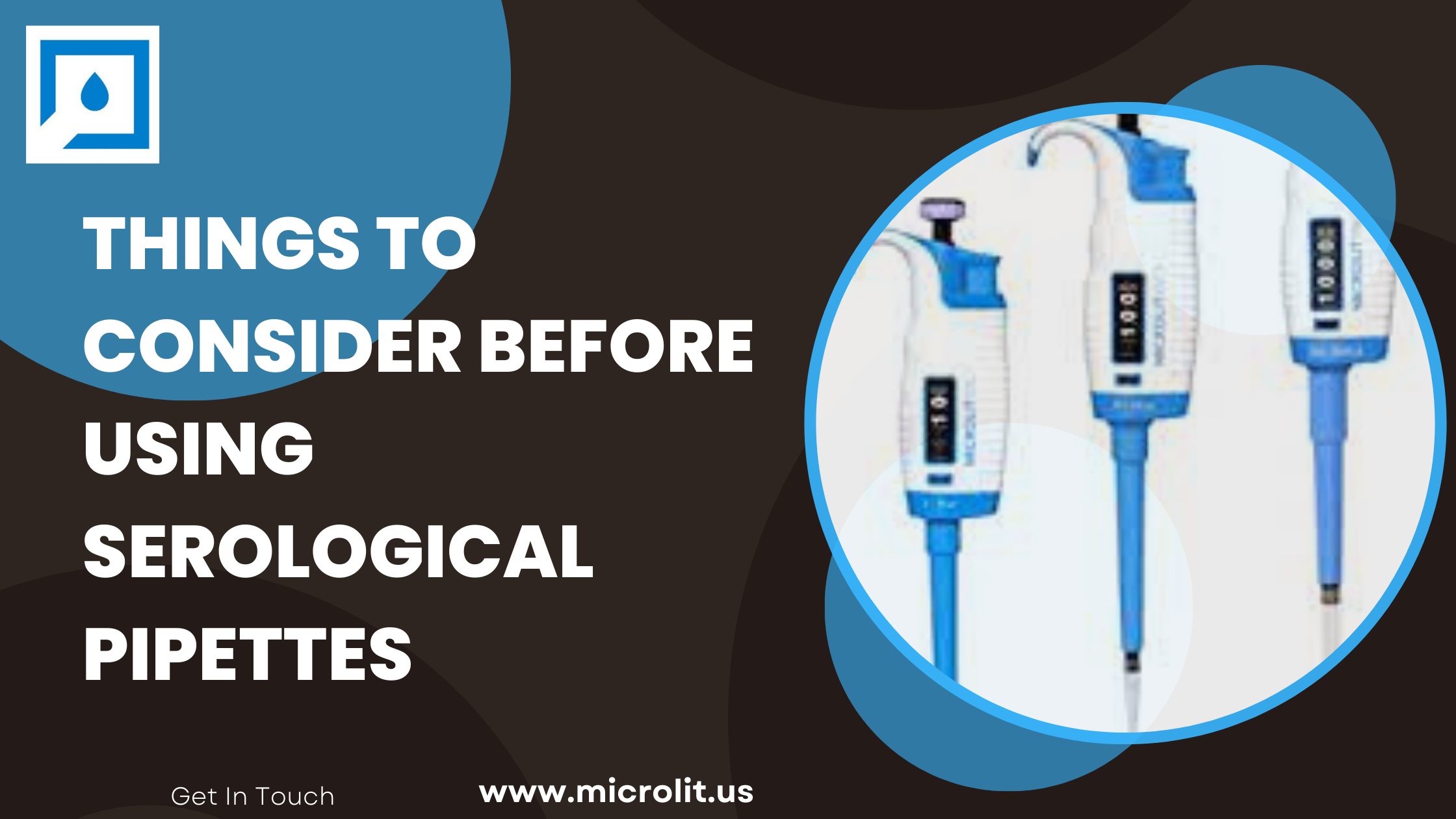Things to Consider Before Using Serological Pipettes
The serological pipette is widely used in the laboratory to transfer millilitre amounts of liquid ranging from less than 1 ml to up to 50 ml. Pipettes are available in sterile, disposable, plastic, sterilizable, glass, and reusable varieties. For example, serological pipettes can be used to accurately layer reactants of varying densities, mix chemical solutions or cell suspensions, transport fluids between receptacles, or mix chemical solutions or cell suspensions.
If the amount of the liquid being inhaled and discharged is carefully regulated, serological pipettes may be effective instruments in the lab for transferring correct millilitre quantities of solutions. Serological pipettes provide exceptional accuracy, especially when combined with pipette tips. Continue reading to find out what factors affect serological pipette performance.
Things to Consider Before Using Serological Pipettes
What Affects Serological Pipet Accuracy and Precision?
A variety of factors impact the precision and accuracy of serological pipets. They are pointless unless the results are correct. Pipettes must generate readings that are near to the nominal or real volume set by the volume control.
Precision is defined as the capacity to repeat a test and acquire consistent findings. The results of the repeated tests must be within a specific standard deviation. It is vital to document environmental and liquid variables throughout testing. The precision and accuracy of your results might be affected by the following factors:
Temperature:
The density of liquids is also impacted by temperature. The difference in temperature between the liquid and the delivery mechanism has a significant influence on the results. The volume of dead air (air gap) between the piston and the liquid surface grows. The volume of liquid sucked into the tip fluctuates as a result. As a result, the precision and accuracy of your results are threatened.
Altitude:
Air pressure changes with geographical altitude. As altitude reduces air pressure, the conversion factor Z drops. At high elevations, the boiling points of some liquids can approach room temperature. As a result, evaporation loss will be greatly increased.
Choosing the Right Pipette Size
To guarantee accuracy and precision, it is vital to use suitable equipment for measuring each volume. To reduce mistakes, always use the smallest pipette suited for the purpose. A 5 mL serological pipette is more accurate than a 10 mL pipette for measuring 4.5 mL of liquid. If you're working with extremely little quantities, a small pipette will suffice. As a result, a serological pipette with a capacity of 2ml or greater is typically recommended. Its tiny diameter and precise graduations aid in eliminating mistakes in evaluating the meniscus of the sample.
Considerations When Purchasing Serological Pipettes
Before acquiring serological pipettes, you should be informed of the nature of your experiment and whether or not serological pipettes are necessary. The serological pipette can be used to move liquids between vessels, mix chemical solutions, and lay reagents of varied densities.
Choosing the right pipette:
There are three types of he serological pipettes: open, bacteriological and aspirating. Again, this depends on the nature of your experiment. Therefore, you should choose the type that best suits your experiment.
Recognizing Serological Pipette Precision
The accuracy of serological pipettes is limited by their smallest increments, which are generally a few millimetres (0.1 mL for those that are 2 mL). If your study demands a high degree of precision, we propose combining your serological laboratory pipette with a micropipette.
To Wrap Up: To conclude, keep all of this in mind before using a serological pipette. Serological Pipettes can help you conduct more precise and efficient tests. Visit Microlit to acquire high-quality equipment like serological pipette, pipette tips like filter tips, and other equipment.




Comments
Post a Comment